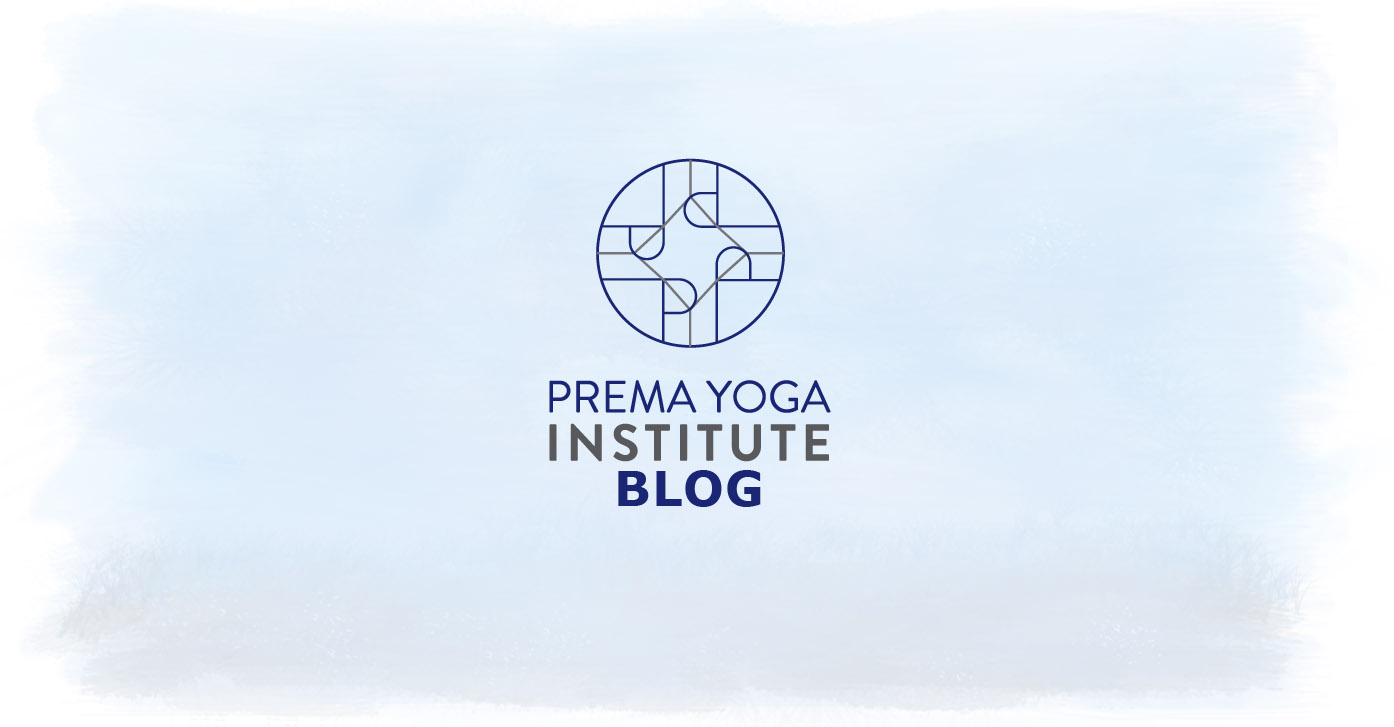
Enrolling in Advanced Yoga Teacher Training to Guide Other Teachers
Enrolling in Advanced Yoga Teacher Training to Guide Other Teachers
The yoga teaching journey is different for everyone, and some practicing students choose to switch hats by becoming teachers themselves, perhaps with an RYT-200 program. However, the fundamental RYT-200 yoga teacher training is only the beginning and opens the door for advanced yoga training.
From there, new yoga teachers may teach classes, offer clinics, or provide community classes. Some new yoga teachers choose to take a few continuing education yoga teacher courses, and some dig deep into advanced YTT programs and specialties.
The tradition of yoga is alive and needs to pass on carefully. There are dozens of reasons to further your education, and maybe the most important is serving your community by helping the next generation of yoga teachers.
Exploring Advanced Yoga Teacher Trainings
The road to mastery and future leadership in your yoga community starts with your education.
It’s a great idea to continue expanding your knowledge to build your instructional skillset. A deeper understanding of asana, pranayama, and anatomy boosts your credentials and make you a more knowledgeable yoga teacher. Not to mention, your client’s health and safety will also benefit from such mastery of the craft.
Furthering your yoga teacher training allows you to explore the ancient roots in depth. To honor such a tradition, be sure to look for teachers that always cite and give credit to their teachers – as well as to the traditions of South Asia.
Advanced yoga teacher training also permits an intense immersion into the culture of yoga. This concentrated focus strengthens your commitment and serves as a reminder of why yoga is essential.
Explore a favorite calling of your yoga practice with an Advanced YTT course. Your passion is profoundly personal and gratifying, and studying yields rewards for yourself as you become a qualified expert.
After completing your chosen advanced yoga teacher training, and working in your specialty, you are poised to bring your energy to your students or shift into guiding other yoga teachers into the deeper layers of yoga.
Becoming a Teacher Trainer
When you graduate from Advanced YTT programs and build on that training with more experience, you become qualified to help other yoga teachers learn. It's the ultimate expression of the student becoming the teacher.
The opportunities are endless as well. Perhaps you feel a calling to teach a complete RYT-300 or RYT-500 course. Certainly, you will need to complete those courses before attempting to lead one, and the Yoga Alliance has developed more rigorous criteria for becoming a teacher trainer that require these certifications.
Or would you like to specialize? Every characteristic of the yoga tradition needs qualified and educated leaders. Becoming a master of pranayama, anatomy, meditation, or asana takes years of practice paired with higher education on the topic, and may qualify you to become a continuing education professional (“YACEP”) through Yoga Alliance.
Mentorship is another benefit of becoming an advanced yoga teacher. This relationship between coach and pupil runs both ways. You guide traditions, safety, asana, inclusivity, and experiences, and your mentee has just as much to teach you in return.
How to find Advanced Yoga Teacher Trainings (Advanced YTT)
The variety of advanced teacher trainings available may seem overwhelming. What aspect of yoga fuels you? Choose a program that suits your passions and immerses you in these aspects. Follow your instincts!
These days, we no longer need to travel or commute for the advanced yoga teacher training program of our dreams; as many are now available online. For example, Prema Yoga Institute, is longer limited to New York City and is now available online with interactive trainings through 2022.
Prema Yoga Institute is an accredited program based in New York city, teaching students around the globe through online classes.
Contact us today to learn more about how we can help you advance your yoga practice and teaching!
If you found this information useful, visit our Blog often or subscribe to our Mailing List for similar content.
How Studying Functional Anatomy Can Inform Your Yoga Teaching
How Studying Functional Anatomy Can Inform Your Yoga Teaching
Studying functional anatomy can help inform your yoga teaching to create safer, more inclusive sequences and classes.
Merging functional anatomy with yoga will allow you to view your practice from a new perspective, and is beneficial for you as a yoga teacher and for your students.
The Fundamentals of Functional Anatomy
To better understand how functional anatomy can inform you as a yoga teacher, let’s start by taking a look at some of the fundamentals of functional anatomy.
Traditional methods of studying anatomy focus on what happens to the skeleton during muscle contractions. Functional anatomy brings another dimension to muscle movement. As the human form carries out routine actions, like walking, lifting, and sitting, functional anatomy examines all muscles and their relationship – a truly yogic perspective.
How does one muscle work with the surrounding bones and joints during flexion and extension? Functional anatomy has the answers!
The elbow joint is a great example. Anatomy tells us that the bicep contracts and shortens, flexing the elbow and bringing the forearm closer to the body. It's a straightforward analysis. When viewed through functional anatomy, the bicep contraction flexes the elbow, and the tricep becomes longer as it engages. This action of the tricep slows down the flexing of the elbow as it interacts with the bicep.
As the elbow extends and opens, the tricep engages and shortens to straighten the arm. The bicep balances this action with dynamic elongation.
You may also hear terms such as “concentric” in the fitness realm, which is a contraction that shortens the muscle. Eccentric contractions create elongation in partnership with the concentric action. Isometric contractions increase the force of a muscle without changing its length.
When learning about functional anatomy, you learn how to adjust your guidance for all body types, experiences, injuries, and emotions that your students experience. Advanced trainings can focus on the biodiversity of human anatomy – to ultimately create a more inclusive wellness space in your yoga classes.
Merging Yoga and Functional Anatomy
Modern, transnational yoga can too often about the poses, not the people. Sequencing, flowing, and cues involve where to point feet, where to gaze, and how to deepen into a shape. The focus can unfortunately shift to how the human form looks, not feels.
When a yoga teacher uses functional anatomy to guide a yoga student into a posture, the student's experience and awareness become the focus. The quest for the textbook version of a pose is gone, and how a pose feels takes priority.
Functional anatomy is more than just allowing a student to individualize their practice by adjusting shapes according to personal anatomy and range of motion. It serves to strengthen and stabilize the body for daily movements.
For example, many people sit at desks for their jobs, which often results in a muscular imbalance between the front and back of the body. The mere act of sitting and rising from a desk may also strengthen the quadriceps over time, leaving the hamstrings unbalanced. A traditional yoga cueing for chair pose may be to sink lower, further strengthening the front body. Functional yoga seeks the position to stabilize the entire body and build strength and awareness where there may be gaps in perception. In the case of chair pose, this might mean lifting upwards to better feel engaged.
The Benefits of Functional Anatomy for Yoga Students
Teaching yoga with the understanding of functional anatomy benefits your students by encouraging svadyaya – or self-study.
When the yoga student does not feel obliged to fit their bodies into a certain shape, but rather to feel through interoception what their body needs, they gain confidence. It's human nature to compare our bodies and watch the mirrors to see what others are doing. These ingrained habits vanish as the student can move with feeling and according to their physical and emotional structure.
Yoga teaching infused with functional anatomy may also be safer. For one, students can learn to connect with themselves in a safe emotional space, strengthening the bond between student and teacher. Yoga-related injuries may also be reduced as the focus shifts from flexibility alone towards practicality. And even existing injuries and stiff joints may benefit from this holistic approach to movement.
With functional anatomy knowledge, teachers and students alike discover that the differences that make us unique will not exclude us from any part of a meaningful and beneficial yoga practice.
Interested in Studying Functional Anatomy As Part of Advanced Yoga Teacher Training?
If this article has piqued your interest in functional anatomy, we’d love to invite you to Prema Yoga Institute’s Functional Anatomy Training.
The Functional Anatomy Training is now available online and teaches how to:
Develop your confidence teaching to all different types of bodies
Think critically about biases that often go overlooked in anatomy and movement science
Gain support and education to skillfully move away from a "one size fits all" type of teaching
Learn to better see and "Read" bodies in order to better meet your student's varying needs
Interface more effectively with doctors and health care professionals
Advance your teaching towards a Yoga Therapy Certification
And more (click here for details)
Additionally, The Functional Anatomy Training counts as 50 CE Credits with Yoga Alliance OR towards your RYT500 at Prema Yoga Institute.
Visit Prema Yoga Institute to learn more about our training, which is now available online with interactive trainings through 2022!
PYI is an accredited program based in New York city, teaching students around the globe through online classes. Contact us today to learn more about how we can help you advance your yoga practice and teaching!
If you found this information useful, visit our Blog often or subscribe to our Mailing List for similar content.
Benefits of Yoga for Pain Management
Benefits of Yoga for Pain Management
By integrating a yoga practice into your healthcare and wellness routine, your body and mind work towards a peaceful and comfortable balance. Discomfort and pain in our bodies may be transitory or permanent, and yoga mayhelp alleviate suffering.
Yoga for Pain Management - Types of pain and your nervous system
Acute pain is sudden pain, sometimes associated with a fresh injury. Acute pain subsides as the cause of the pain is healed.
Chronic pain is sustained and continues after all possible causes are treated. Sometimes, chronic pain begins without an imbalance or injury, and no reason can be discerned.
Our bodies perceive pain via our nervous system. One branch of the nervous system, the sympathetic nervous system, prepares the body to fight or flee. There's a quick response as the heart rate quickens and muscles prepare to respond to a threat. When the sympathetic nervous system is alerted, stress levels go up!
Another branch, the parasympathetic nervous system, supports the body in balance, creating the foundation for rest, healing, and digestion. The physical manifestations are the opposite of the body in a fight or flight situation - the heart rate slows, muscles relax, and there is a slower response time of your nerves.
When we experience pain, we shift into fight or flight mode. We become physically and mentally stressed, increasing our vital signs with heightened tightness and increased stress hormones.
Using yoga for pain management helps to stimulate the parasympathetic nervous system, bringing relaxation to the body to tone down the strains of the intensified sympathetic nervous system. Asana addresses movement and pranayama addresses internal peace and breath. Together, these aspects of yoga for pain management work towards restoring balance in the body and making pain more manageable.
The benefits of yoga for pain management
Mobility is the cornerstone of a healthy physical body and combines flexibility and strength. With healthy mobility, the physical structures of the body have a proper framework in which to heal. Posture is improved, joints are lubricated, and stability increases which may help prevent further injuries.
The physical aspect of yoga for pain management also increases energy levels and improves our mood. It's possible to boost confidence we struggle less with daily activities thanks to gentle yogic movement.
There is also mounting scientific research that supports using yoga for pain management. Wrist pain may be reduced as grip strength increases with yoga. It's also been shown that Iyengar yoga helps with reducing low back pain while boosting mood. Even “pain associated with cancer and chronic pain conditions has been shown to improve with yoga” according to a study from the National Center for Biotechnology Information.
How pranayama helps alleviate and soothe pain
Pranayama (or prāṇāyāma) can work directly to stimulate the parasympathetic nervous system. Mindful breathing techniques bring a chronic pain sufferer into the present moment, taking the focus away from pain and directing the body out of panic mode. Using pranayama to boost relaxation also takes the body away from the constant physical stress of being in pain.
There is also research that shows pranayama influences pain levels. One study indicates that deep and slow breathing does influence a decrease in the sympathetic nervous system and decreased pain perception. (2) Other studies have shown that breathing techniques help the laboring mother and chronic pain patients.
Considerations for managing pain with yoga
Approach your health holistically! There is more than one road to wellness; yoga is just one part of the journey.
Work with a team of specialists. Yoga teachers and particularly yoga therapists with advanced certifications and extensive educations have the knowledge and skills needed to coordinate a wellness plan with your doctor.
Enjoy the process and take the tools home with you. Yoga is not a prescription or a quick fix. It's a lifestyle that allows you to connect with movement and breath as needed. There's no schedule to follow - yoga is always there.
For Advanced Yoga Teachers and studying Yoga Therapists – consider enrolling in Advanced Yoga Teacher Training at Prema Yoga Institute to better serve your students.
Learning how to better serve your clients with yoga for pain management can be rewarding and open up freedoms for your students in their daily life. Enroll in advanced yoga teacher training at Prema Yoga Institute to study advanced techniques in using yoga for your clients health. Your skills will grow, and you will be better able to serve diverse bodies and ages in your community.
If you have any further questions about this topic, contact us at Prema Yoga Institute.
Prema Yoga Institute is no longer limited to locals of New York City and is now available online with interactive trainings through 2022. PYI is an accredited program based in New York city, teaching students around the globe through online classes. Contact us today to learn more about how we can help you advance your yoga practice and teaching!
If you found this information useful, visit our Blog often or subscribe to our Mailing List for similar content.





